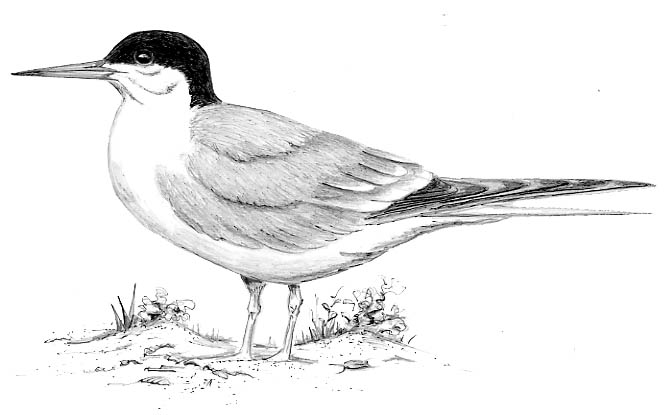
Dear Bird Folks,
During my college years I used to spend the summers working on Cape Cod. Back then I didn’t have much interest in birds, but I do remember the papers being filled with stories about people who were trying to save the terns. That was years ago (I won’t tell you how many) and now the Cape papers, which I still receive by mail, have stories about those cute little Piping Plovers but not much is ever said about the terns. My question is: How are the terns doing?
– Doug, Staten Island, NY
I remember those days, too,
Doug, Even though I haven’t thought much about it in recent years, there certainly was a lot being written about terns back then. Saving the terns became such an important movement that Pete Seeger even wrote a song about it. I’m sure you remember the song. It’s called Tern! Tern! Tern! Lots of folk singers recorded it but the group that had the biggest hit with Tern! Tern! Tern!, appropriately enough, was The Byrds. Like many people from those days I really enjoyed singing that song. However, even I must admit that I can’t figure out what the song has to do with birds, but who am I to argue with Pete Seeger?
Over the past century Cape Cod has been the scene of some very good, some very bad and some improving news in the life history of terns. About the time the first electric streetlights were being installed in this country the numbers of terns that nested around the Cape and Islands would be hard for most of us to imagine. A single colony off Nantucket was said to have contained nearly half a million birds. And that was just one colony of many. Then (I know you’ve heard this before, but here it is again), along came those wonderful plume hunters. In a few short years, those massive colonies were no more. We had streetlights and pretty hats, but our natural heritage was being obliterated in the name of fashion. Finally, with the help of two Boston women, migratory birds were given protection. The needless killing was stopped and the terns were safe once again. Well, not completely safe. Next came the gulls.
Remember the good old days when we could take our trash to the dump, when it really was a dump? Don’t you miss them? I sure do. Well, those massive piles of garbage, along with waste produced by the fishing industry, provided delicious year round food for the gulls and lead to an explosion in their population. When the terns returned in the spring, they found that their favorite nesting areas had already been taken over by ever-growing colonies of the much larger, and not very cooperative, Herring and Great Black-backed Gulls. The terns were forced to use less preferred and much less productive alternative nesting sites. These secondary sites were often accessible to both mammalian predators (foxes, skunks, raccoons) and avian predators (owls, herons, crows). The predators loved this new arrangement; fresh tern chicks are delicious. However, having all their babies eaten each year wasn’t in the best interest of the terns. But wait, there’s even more bad news coming.
In addition to the growing gull population, the terns had to deal with another growing population, humans. The once quiet summer beaches of years past were suddenly filling up with ORVs, kids, kites, dogs and Frisbees. Kite flying seems like a harmless activity, but kites will often cause the nervous parents to fly off their nests, leaving the eggs unprotected and exposed to hungry crows and the blazing summer sun. The Frisbees caused even more problems. Occasionally, one would accidentally land in a colony. The adult terns would then spend all their time throwing it back and forth and totally forget to feed their chicks. Even though there is no documentation of this actually happening, I’m sure it did.
As you might imagine the guns, gulls and Frisbees, eventually took their toll on the terns’ population. By the time the ’70s rolled around the local terns were in big trouble. Something had to be done soon or the only terns to be seen on Cape Cod would be the ones on postcards. Better management of commercial fishing waste and the capping of the dumps have helped control the gull population. Federal, state and local officials, along with the Massachusetts Audubon Society, all combined to protect the remaining tern colonies. Tern wardens were hired, signs were posted and predators were kept in check. The efforts slowly began to pay off. Over the last few decades the tern population, at least for some species, has grown. There are still problems and the end result is by no means certain, but things look a bit brighter than they did thirty years ago.
There is no way we are ever going to see those massive colonies again, Doug, but the terns are doing better than they were when you spent your summers here. All of us who appreciate the beauty of terns can thank the long list of hardworking researchers, tern wardens, interns and volunteers who have helped save them. But all of their work is nothing when compared to the sacrifice the rest of us have made. We had to give up the dumps. Don’t you miss them?